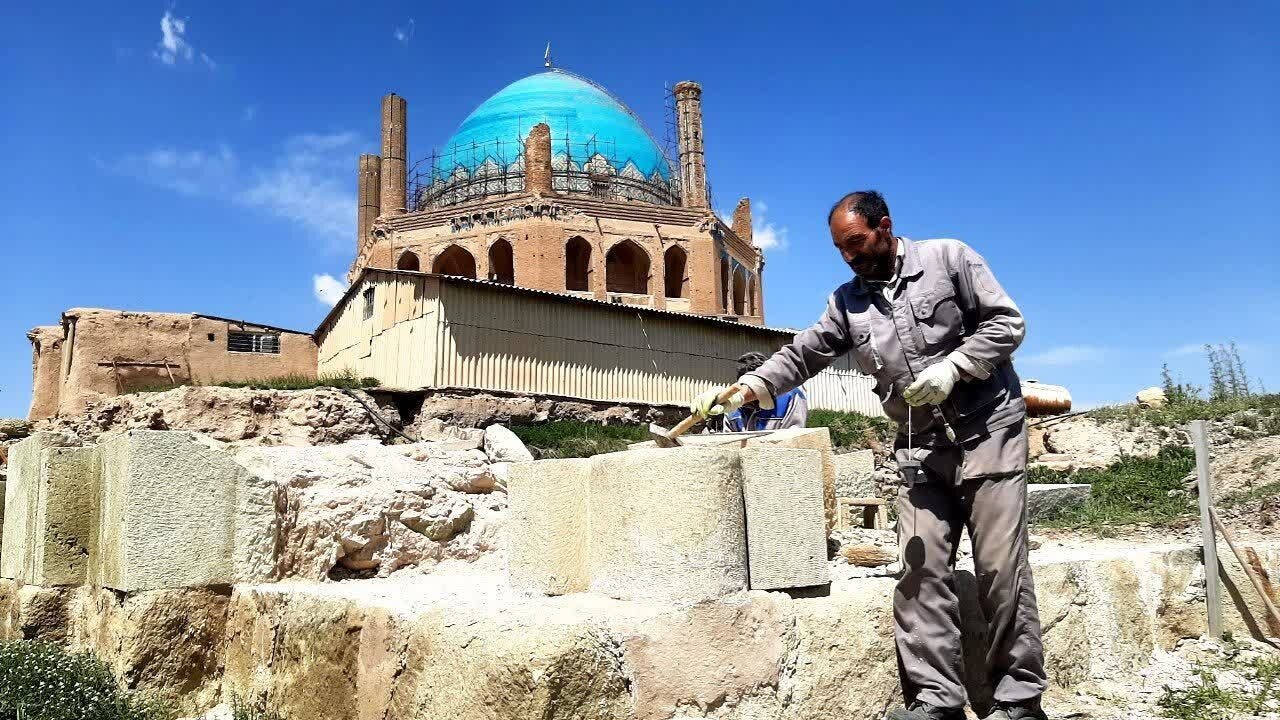Soltaniyeh, a UNESCO-listed mausoleum of the 14th century, undergoes restoration

TEHRAN – Phase two of a restoration and conservation project on the southern gate of the UNESCO-listed Soltaniyeh Dome has commenced, according to the director of the World Heritage site.
Speaking to the press on Saturday, Abolfazl Ali, Director of the Soltaniyeh World Heritage Base, announced that the latest phase of work – focusing on the protection, reinforcement, restoration, and interpretation of the monument’s southern gate – has commenced and is expected to continue through the end of November.
The restoration is being carried out by skilled craftsmen from the site’s own heritage team. “This initiative is part of a broader plan to help preserve one of the most exceptional stone structures from the Ilkhanid era,” Ali stated.
Moreover, the restoration work includes a nearby stone citadel, some of whose main sections have already undergone restoration, with several nearing completion.
“With the completion of restoration and decorative works, we hope to transform this globally significant structure into a vibrant cultural tourism hub,” Ali added.
He emphasized that the ongoing restoration, despite its challenges, stands as a symbol of Iran’s enduring commitment to safeguarding its cultural heritage.
Constructed between 1302 and 1312 under the rule of Oljaytu, the Dome of Soltaniyeh is located in Zanjan province and is regarded as a landmark of Persian and Islamic architecture. The octagonal mausoleum features a 50-meter-tall turquoise-blue faience dome – the earliest known example of a double-shelled dome in Iran – flanked by eight slender minarets. Its elaborate interior decoration has drawn praise from historians, with noted scholar Arthur Upham Pope describing it as “anticipating the Taj Mahal” in grandeur and vision.
According to UNESCO, the Mausoleum of Oljaytu is an essential link and key monument in the development of Islamic architecture in central and western Asia. Here, the Ilkhanids further developed ideas that had been advanced during the classical Seljuk phase (11th to early 13th centuries), during which the arts of Iran gained distinction in the Islamic world, thereby setting the stage for the Timurid period (late 14th to 15th centuries), one of the most brilliant periods in Islamic art. Particularly relevant are the mausoleum dome’s double-shell structure (an inside shell and an outside shell), and the materials and themes used in its interior decoration.
AM
